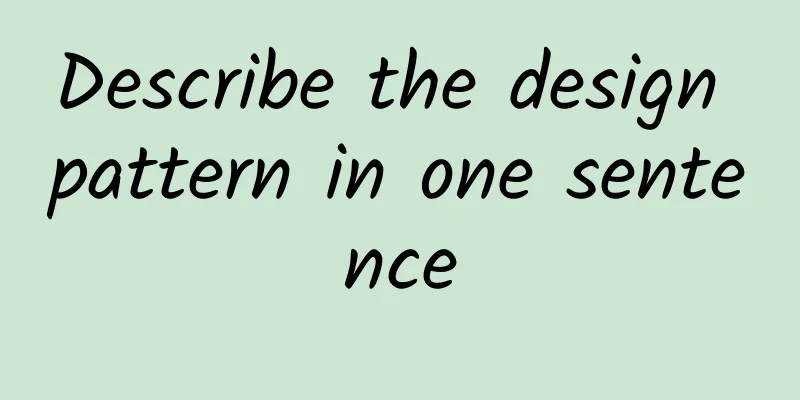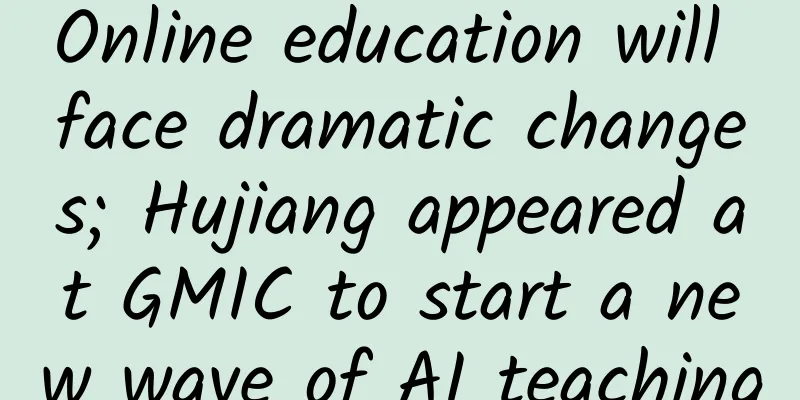Describe the design pattern in one sentence

|
As the title says, actually, I think this is very difficult. Unless - just to give yourself a reminder, so that you can quickly recall the memories of this design pattern at a glance. The following is a summary of my notes when I was studying "Design Patterns in Big Words", some of which are from its author Cheng Jie. (Thank you very much for building such a smooth learning channel for the mysterious design pattern) 1. Creation type: (1) Singleton: Consider when only one instance is required. (2) Factory method: The factory method is generally used first to solve the object creation problem. (3) Abstract Factory: When the factory method cannot meet multiple series of problems, it is refactored into an abstract factory. (4) Builder: The construction implementation of multiple components is the same, but the required components and construction order are different. (5) Prototype: considered when the initialization information does not change. 2. Structural type: (1) Adapter: Allow classes with incompatible interfaces to work together. (Fixing the barn door after the sheep have been bolted) (2) Decoration: Dynamically add additional responsibilities to a single object, which is more flexible than generating subclasses. (3) Bridging: Change the inheritance relationship to a combination relationship so that the two can change independently. (Prepare for a rainy day) (4) Combination: Use a tree structure to represent the hierarchical relationship of "whole-part" so that the use of single objects (leaf nodes) and combined objects (branch nodes) is consistent. (5) Flyweight: It uses sharing technology to support a large number of fine-grained objects and save costs. (6) Proxy: Controls access to a single object. (7) Appearance: The high-level interface of the subsystem, avoiding third parties in the direct relationship between two classes. 3. Behavioral: (1) Observer: One-to-many dependency relationship. If one end changes, multiple ends are notified and automatically updated. (The target and observer can achieve weak coupling) (2) Template method: inheritance + rewriting solves the problem of code duplication. (3) Command: Decouple the request sender from the specific implementer, and can queue, cancel, and redo requests to support transactions. (Multiple requests, single processing) (4) Chain of responsibility: Arrange the handlers into a chain and pass the request along the chain. (Single request, multiple handlers) (5) State: When the state within an object changes and different operations are performed, the state transfer logic is not in the if/switch, but between subclasses. It is easier to add/modify states and state transitions. (6) Interpreter: If a particular problem occurs frequently enough, it is necessary to define the grammar representation and the interpreter itself. (7) Mediator: The mediator encapsulates a series of object interactions, reduces coupling between objects, and facilitates reuse. (Many friends) (8) Visitors: Consider when the Elements are relatively stable and Visitors are easy to increase. (Friends are more about quality than quantity) (9) Strategy: Encapsulate a series of algorithms one by one and make them interchangeable, making them easy to switch, understand, and expand. (10) Memo: It does not destroy encapsulation, but takes the state of the object into account and requires that the state be restored. (Maintain encapsulation boundaries) (11) Iterator: Separate the access and traversal of a collection from the collection object into the iterator. |
<<: After he sold the company, he paid his employees 150 months’ salary!
>>: Why do we need motion design?
Recommend
Qige's "30 Lessons in WeChat Moments Marketing" video Baidu Cloud download
As one of the windows for displaying individuals ...
54 lessons required for training managers: a learning map from training management to organizational development
54 lessons required for training managers: Learni...
Everything about Bitcoin in 2014 is in this report
Overall, 2014 can be described as a “Tale of Two ...
Battery dilemma: a game that can’t be stopped
At present, China has surpassed the United States...
How to install and set up the wordpress pageview plugin (wp-postview)?
As a webmaster, what I care most about is how man...
Terminal Wars: Xiaomi's Model Is Not Huawei's Cup of Tea
Recently, Huawei confirmed to the media that Zhu ...
Shine! Chinese Treasures ①丨The history of "China" is longer than you think
The word "China" refers to both China a...
Encouragement: Sharing the experience of failure in the first entrepreneurial project
If you don't do some things now, you may neve...
2021 Bianfeng Weiweiwei talks about + research report highlights
Brief introduction of Bianfeng Weiweiweidaolai + ...
A collection of 13 essential tools for new media operations!
Thirteen categories of operation auxiliary tools ...
IOS witchcraft: the unkillable background & monitoring process
Implementation without jailbreak: Startup: After ...
Before the advent of carnations, what flowers did ancient people use to represent mothers?
Last December, I went to Suzhou with a friend. Wh...
Pigeons can fire missiles, dead fish can swim? 2024 Ig Nobel Prize winners announced | Technology Weekly
Compiled by Zhou Shuyi and Wang Xiang Blood sugar...
Why didn’t QQ die out like MSN under the strong impact of WeChat?
QQ is the social platform with the largest number...
KOL Marketing: Xiaohongshu’s High-Quality Short Video Influencer Screening Guide
At present, short videos, as a dark horse in traf...









